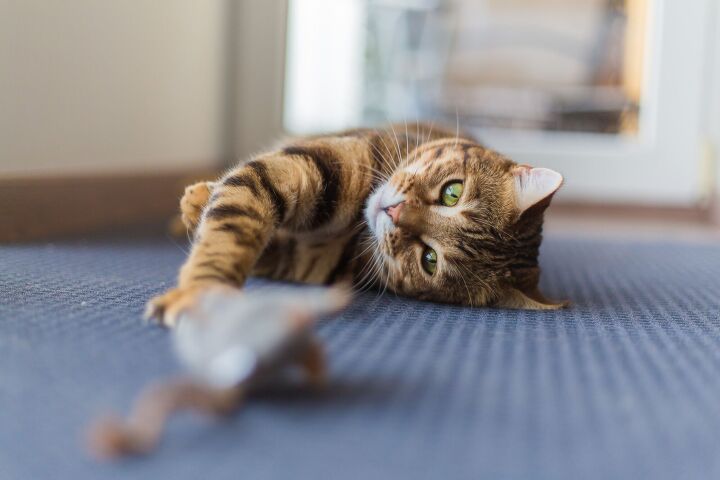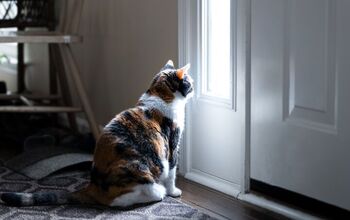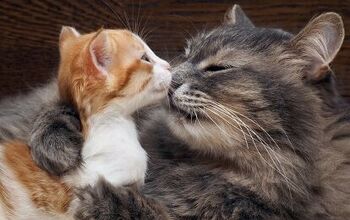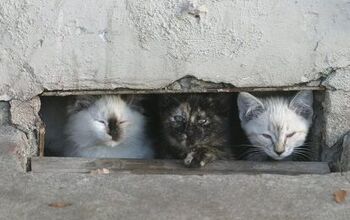How to Get Your Cat to Play

Do you have a lazy cat who isn’t all that interested in playing? Here are some tips on how to entice kitties of all ages to be more active.
Playtime can help keep your cat active and happy, and can help her maintain a healthy weight. Plus, being able to “hunt” allows your feline to experience the satisfaction that comes with taking down prey, so playing is physically and mentally beneficial. In other words, playtime is important in the daily life of your pet.
Kittens and young cats are eager to play, so it doesn’t take much effort on your part to get them moving. But older cats and seniors might need some encouragement. If you’re noticing that your kitty isn’t up for playing, there are some things you can do to entice her to get active. Here are a few tips to help you get started.
Tips for Getting Your Cat to Play
1. Interact with Your Cat
Sure, some toys are safe enough to leave out for your kitty to find and play with, but interacting with your cat and really being engaged in the play session is a wonderful way to bond with your pet, and can also be the ideal way to get her moving.
A toy that’s just lying on the floor may not seem entertaining to your cat, but if you grab a wand toy that has feathers, a stuffed mouse, strings, or other eye-catching elements, you might be surprised by how quickly you get your pet’s attention. Wave the toy around in the air and drag it along the floor to get your cat to chase and jump after the “prey.”
A great example is the KONG Active Feather Teaser Cat Toy, which has a lot of the things that cats love. It features a stuffed animal with feathers on the end of a long string. And it makes a crinkle sound when your kitty grabs it. Plus, it’s filled with catnip, so your feline is sure to be satisfied when she’s able to snatch this out of the air or chase it down on the ground.
2. Mimic a Hunt
Your fluffy little feline is a powerful hunter, and she wants to let that energy out. Playtime is the chance for your cat to feel like she’s tracking and tackling prey. So, if you’re using a wand toy with a mouse or feathers on the end, move it in a manner that mimics the way small mammals and birds move.
For example, a bird will fly through the air and then land on the ground, while a mouse will move slowly and then quickly before stopping. With the right movements, your cat is more likely to lock her attention on the toy and follow it until she’s ready to leap, pounce, and grab, so see what gets her going.
You can also give your cat some food or treats at the end of the play session – just like a feline in the wild would eat their prey – and if your cat begins to associate playtime with treat time, this strategy might make her even more excited to exercise.
3. Offer a Variety of Toys
Giving your cat the same toys to play with all the time might result in her getting bored, so provide variety. Add new toy styles, such as kicker toys, tunnels, and electronic toys, to the mix. You can even rotate the toys you already have by putting some of them away for a while and bringing others out to keep things interesting.
Although many cats go nuts for catnip, some don’t experience the same euphoric effects. If your kitty doesn’t show an interest in catnip, you can try silvervine toys instead, as silvervine is another plant that can cause kitties to feel amazing.
One option is Mad Cat Gnome Sweet Gnome Catnip & Silvervine Cat Toy, 2 count. These feature a blend of silvervine and catnip and they’re soft and plush, so your kitty can play with them on her own or you can toss them around for her to chase down.
Other Things to Consider
Age and play preferences
Different cats will have varying preferences when it comes to playing. If you have more than one kitty, you might find that they don’t like playing with the same toys, or one might like jumping while the other prefers staying on the ground. It might take a bit of time to figure out what each cat’s play style and preferences are, so be patient.
Also, as your furry friend gets older, you may notice changes in the way that she plays. For example, she might prefer a different style of play or she may play for a shorter amount of time. So, you might need to change the routine when playing with a senior cat versus a young cat.
Take your time
Some cats won’t immediately be ready to play as soon as you grab a toy for them. It might take a few minutes before your cat decides that she wants to interact, so even if your cat isn’t interested right away, keep moving the toy to see if she changes her mind.
Remember, if your kitty lounges around all the time, try different types of toys, such as wands with feathers on the end of a string, a laser pointer, catnip toys, etc. to figure out what motivates her.
Approach each cat differently in a multi-cat home
If you have more than one cat and they all love playing together, that’s great! But if you have a shy kitty who doesn’t like playing when your other cats are jumping and running around, create a space where she can play with you on her own. That way, all of your pets will get the attention and exercise they need, and they’ll all be able to have some fun in their own way.
Find the Cause of Your Cat’s Unwillingness to Play
There are several reasons why a cat might not be interested in playing like she used to, and simple changes to the toys or techniques you use might make all the difference. But if you can’t get your kitty to play no matter what you do, it’s wise to consult with a veterinarian. Medical issues or stress might be affecting your cat’s behavior and making her avoid activity, and if that’s the case, addressing the underlying issue(s) is imperative.
Even short play sessions every day or multiple times a day can be beneficial to your cat, so keep the tips above in mind if you want to ensure your pet will get the physical activity she needs.

Lisa Selvaggio is a freelance writer and editor, and our resident cats-pert, with certifications in pet nutrition and pet first aid. An advocate for better treatment of all animals, she enjoys producing content that educates others, helps them understand animals better, and inspires them to help, whether that means volunteering at a shelter, fostering strays, or simply giving their own pets a safe and happy home to live in.
More by Lisa Selvaggio






















